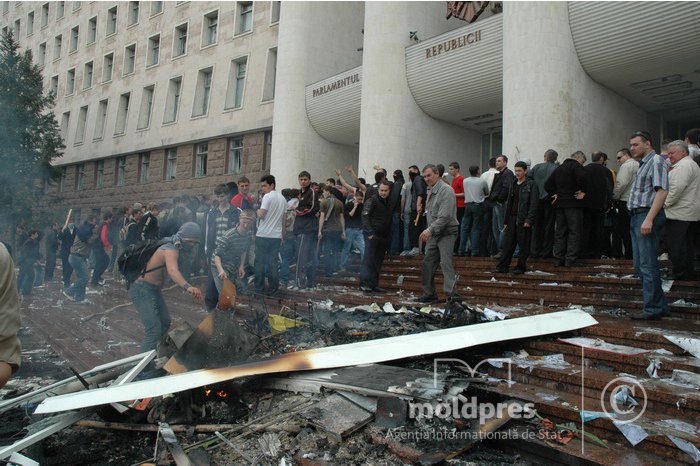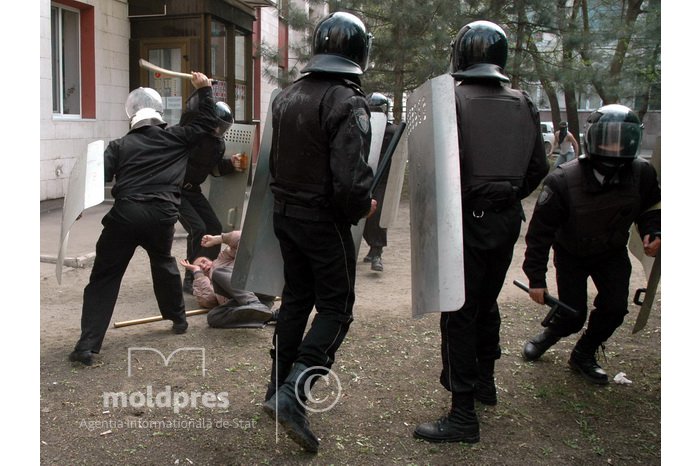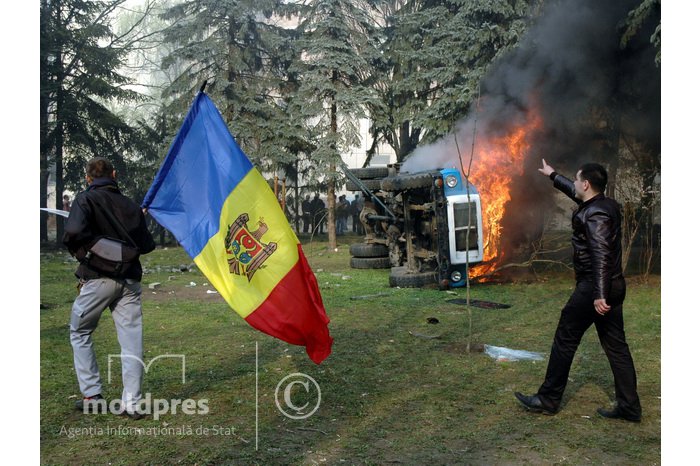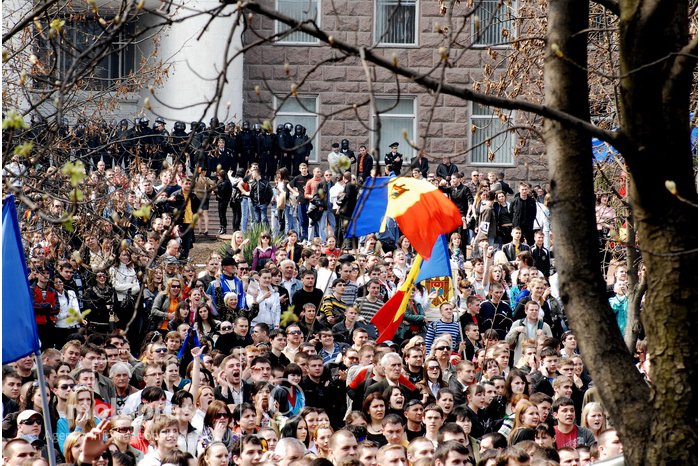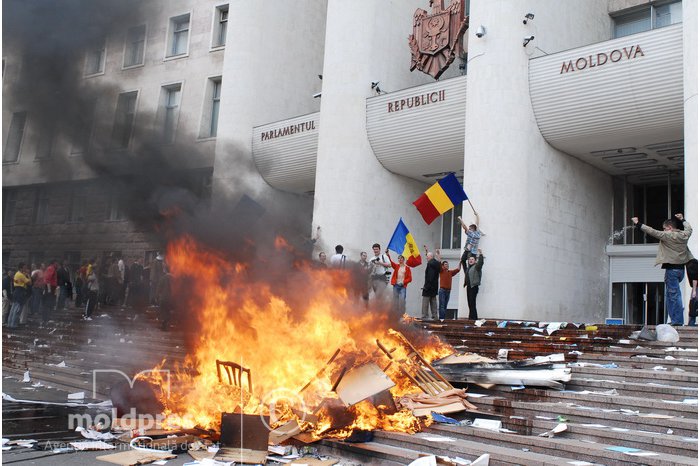14 years since 7 April. Cases - without finality
13:23 | 07.04.2023 Category: Political
Chisinau, Apr. 7 /MOLDPRES/- Today we mark 14 years since the events of 7 April 2009, when thousands of people protested disappointed by the election results and the return of the communists to power. Then several state buildings were devastated, and dozens of young people arrived at the police where they were tortured. The cases opened following the events had no finality.
Speaker Igor Grosu came up with a message on this topic today. He said that in recent years, the whole society sees how important it is to live freely and in democracy. "For this we will do everything possible to be part of the free world, in a European Moldova. Unfortunately, the truth about April 7, 2009 and the crimes committed then has never been known. One more proof that the justice reform must be carried out to the end. Symbolically, this week, the Parliament is hosting the Borders exhibition, dedicated to the events of April 7, 2009. Visitors to the legislative institution will have the opportunity to see various objects and documents recovered from the building after the events of that time, as well as works by artist Valeria Barbas", said Grosu.
History of the "Twitter Revolution"
On April 7, 2009, a large-scale, devastating and very strange protest took place in Chisinau, followed by cruel reprisals. Moldovan society at the time of the April 2009 parliamentary elections was tired of the communist government, and the results of the April 5 elections faithfully reflected these realities. On the morning of April 6, the Central Electoral Commission announced the preliminary election results: PCRM – 49.94% of the votes (60 seats), PL – 12.82% of the votes (16 seats), PLDM – 12.27% of votes (14 mandates), Our Moldova Alliance – 9.83% of votes (11 mandates). Immediately, protest messages disputing the election results appeared on social networks. After 4:00 p.m., several thousand people protested peacefully. The protesters accused the election of fraud and demanded new elections.
On April 7, around 10:00 a.m., more than 8,000 young people were protesting. Strangely, the central buildings of the state were guarded by young students of Stefan cel Mare Police Academy, who were obviously overwhelmed by the magnitude of the events. The opposition politicians were also overwhelmed by the situation. Vlad Filat, leader of the Liberal Democratic Party, made an attempt to redirect the crowd to PMAN, where microphones were installed, but without success. Soon stones started flying at the windows of the Presidency, and then of the Parliament. The law enforcement forces, after a simulation of action, practically withdrew and the destruction of the interior of the central institutions of the state by the protesters began. In a strange way, in the presence of some deputies from the government, the Romanian flag was hoisted on the Presidency building, which suggested that the real organizers wanted from the start to direct the suspicions to someone else. Next comes the destruction, looting and burning of the interior on the floors of both institutions. Among the first rooms set on fire is the Parliament archive. The constituent acts of the Republic of Moldova, the Declaration of Independence and the Constitution of the country were destroyed by burning, even if the metal safes were not even opened. These extremely dubious things have not been elucidated by the Moldovan judiciary even until today.
Towards evening, the protesters dispersed. Shortly after, the police react, arresting people nearby without any argument. About 200 citizens are detained, many of them being mistreated in a barbaric way. Following the blows received from the policemen in PMAN, late in the evening, when the events were already over, young Valeriu Boboc died. The next day, the police raided the educational institutions and detained about 160 suspects. Without respecting the procedures, without the right to defense, with the improper participation of prosecutors and servile lawyers, punishments are applied to dozens of protesters. Later, a parliamentary commission would find these wrongdoings, but no sanction followed. Over the years, some protesters, who were tortured, won cases at the ECHR. The only policeman who was convicted was the one who inflicted fatal blows on young Valeriu Boboc.
President Voronin was quick to blame Romania and the European Union, expelled the Romanian ambassador and introduced visas for Romanian citizens. Later, Russian blogger Baghirov was detained and brought to justice, who was accused of having, in complicity with some people from our country, prepared and carried out the informational support for the devastating actions. Baghirov is shortly released on parole and leaves the Republic of Moldova unhindered. The cases of the application of torture, the destruction by burning of the Declaration of Independence and the Constitution, the very strange behavior of some of Voronin's party colleagues, the role of the most disciplined and active groups of destroyers and many others mysteriously disappeared. Until today, the society has no answers about the origin, screenwriters and directors of the April 7 event.
